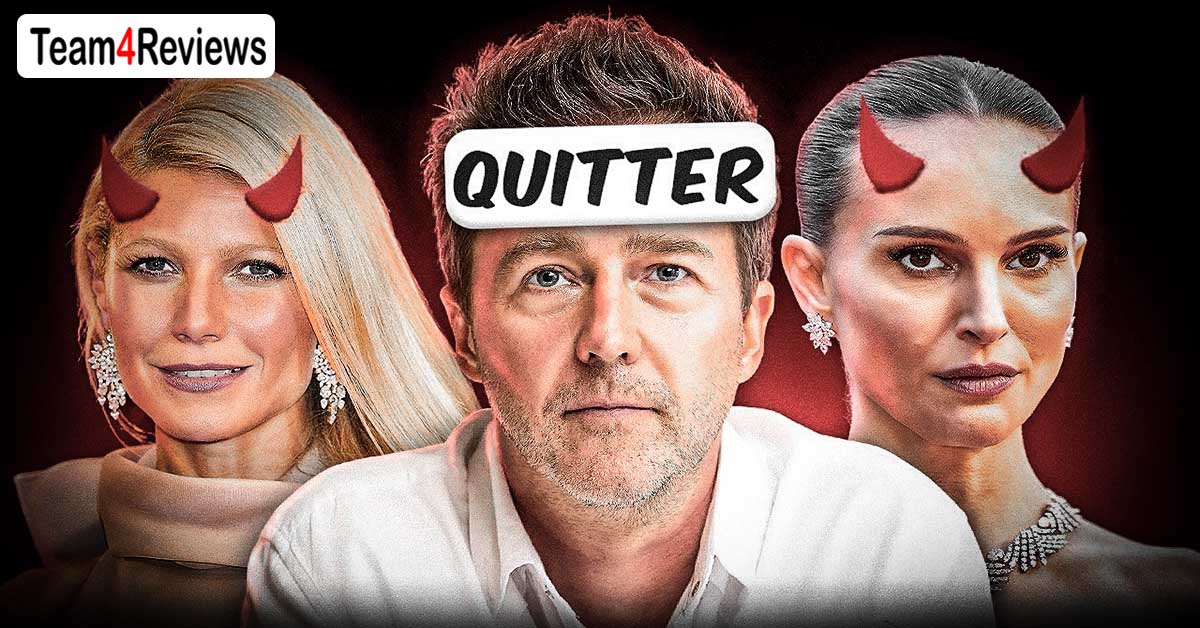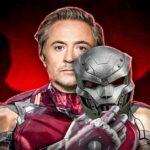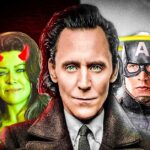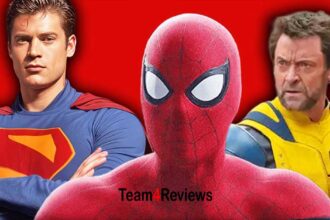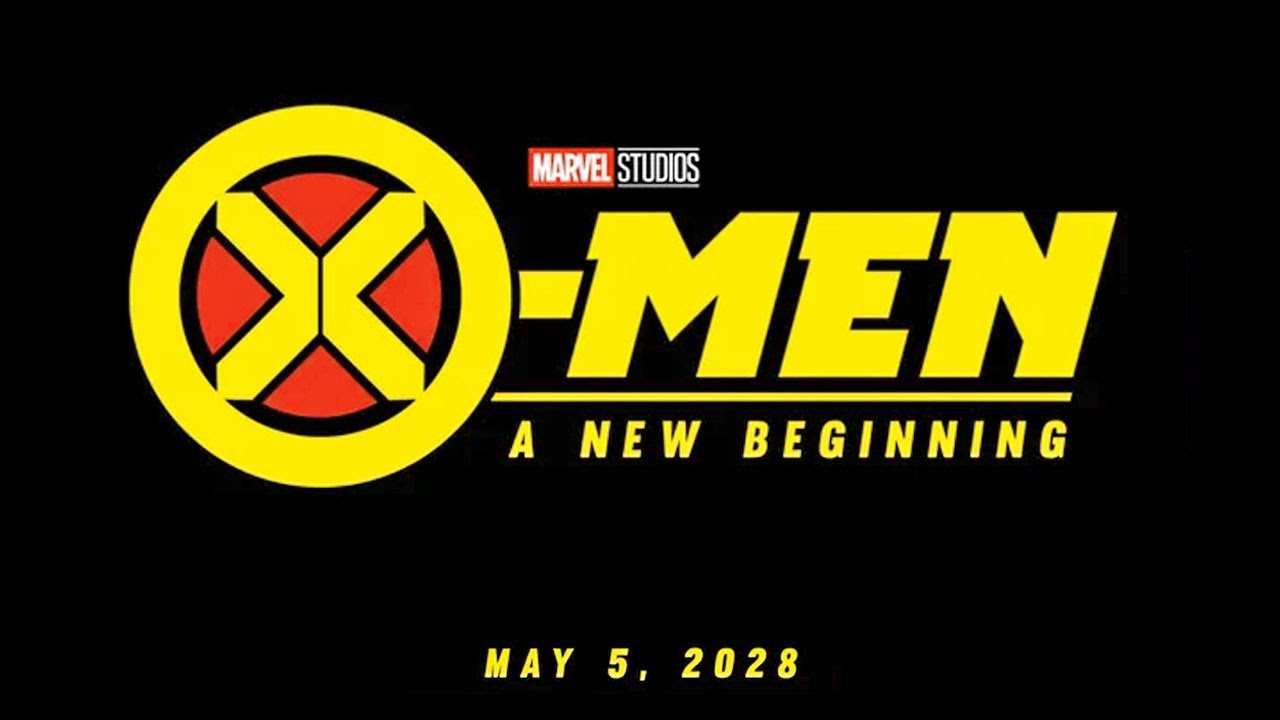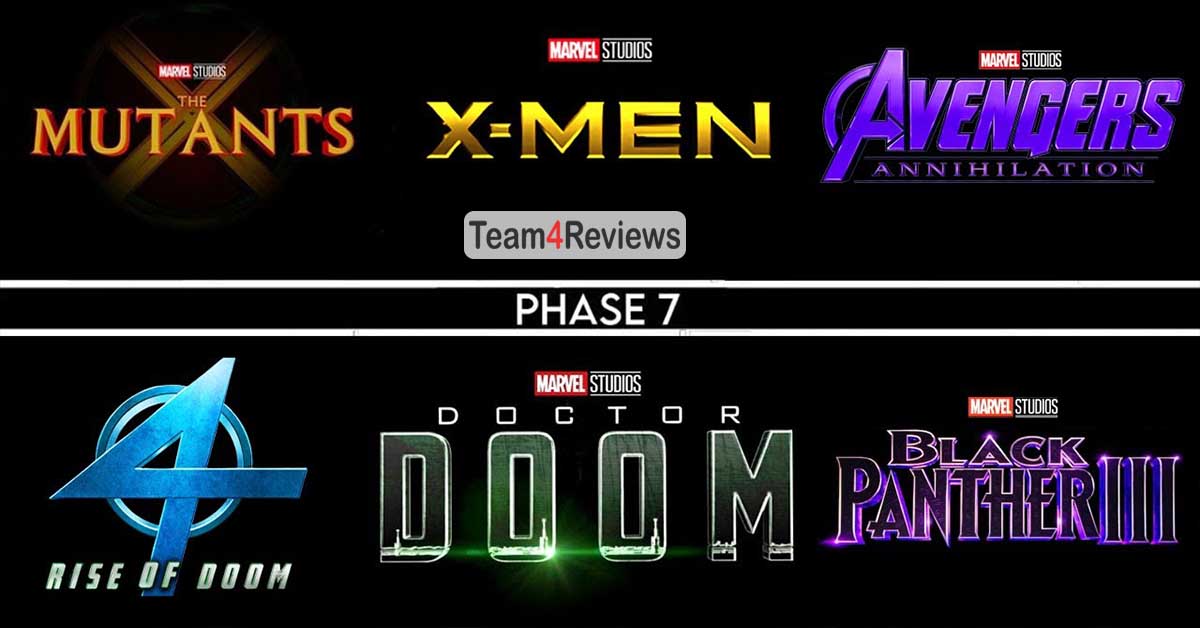Not every Marvel hero loved being a hero. Behind the scenes, some actors couldn’t stand their roles, and you’d never guess who. Starting with one of the most interesting and most complicated cases in the entire MCU, Natalie Portman.
At first glance, it seemed like Natalie Portman’s MCU journey was a win for everyone. Big-budget movies, huge exposure, and a top-tier actress joining Marvel’s growing universe. But behind the scenes, things were falling apart before most fans even realized it.
The real problem started during Thor: The Dark World. Behind the scenes, Natalie clashed with Marvel after director Patty Jenkins, who she strongly supported, was fired early in production. Portman felt she was promised one thing, and Marvel delivered something else entirely.
She stayed and finished filming, but you can tell she was checked out. Even fans called her performance flat, awkward, and like she didn’t even want to be there anymore. And they weren’t wrong.
After The Dark World, Natalie basically ghosted the MCU. She didn’t appear in Thor: Ragnarok and avoided Marvel press for years. When asked if she’d ever return, she famously said she was done, and as far as she knew, that chapter was closed.
Then out of nowhere, Natalie’s back for Thor: Love and Thunder. But let’s be honest, that return wasn’t because she suddenly loved Marvel again. This time, the difference was clear.
New director, Taika Waititi, a completely different tone, and a storyline that finally gave her character something to do. Instead of being Thor’s love interest, she became the Mighty Thor, adapting a fan-favorite comic storyline where Jane wields Mjolnir while battling cancer. Marvel gave her control, depth, and the storyline she wanted all along.
Natalie’s frustration wasn’t with Marvel fans or superheroes; it was with how the studio treated her character. She came in expecting to be a fully fleshed-out lead and was reduced to a side character with almost no growth. Her disappointment with how the first two films handled Jane Foster nearly pushed her completely out of the franchise.
She only returned once Marvel offered the respect and creative freedom they failed to deliver years earlier. Next up is probably the most erased actor in Marvel history, Edward Norton. Most new MCU fans barely remember that before Mark Ruffalo there was another Hulk.
And at one point, Marvel fully expected Edward Norton to be their Bruce Banner moving forward, but instead his entire relationship with Marvel blew up behind the scenes. And today, Edward Norton is one of the most publicly frustrated actors to ever step away from the MCU. In 2008, Marvel released The Incredible Hulk, the second official MCU film after Iron Man.
Edward Norton was cast as Bruce Banner, bringing serious acting credibility to the role. This wasn’t Norton’s first time playing a conflicted, complicated character. His performances in films like Fight Club and American History X showed he could bring real depth to Banner’s emotional struggle.
And at first, Norton was fully invested. But from the beginning, Norton didn’t just want to act; he wanted creative control. In fact, Edward Norton rewrote large parts of the script himself before filming even started.
Norton’s main issue was Marvel’s tone. He wanted to dive into Bruce Banner’s psychology, trauma, and struggle with rage, essentially turning Hulk into a much darker, more serious character. Marvel, however, had a different vision.
They wanted something faster, lighter, more connected to the shared universe they were building, and more marketable to general audiences. Throughout production, Norton and Marvel constantly clashed over the final cut. Reports say that Norton wanted nearly 20 minutes of additional footage focusing on Banner’s internal struggles and development.
Marvel cut it all to keep the runtime tighter and the film more accessible. By the time The Incredible Hulk was released, Norton wasn’t even part of the press tour. His absence was noticeable and not accidental.
After the film underperformed compared to Iron Man, Marvel quickly made the decision. Edward Norton was out. They replaced him with Mark Ruffalo starting in The Avengers and officially erased Norton’s Hulk from the center of the MCU.
Marvel tried to play nice at first, but behind the scenes, it was ugly. Marvel Studios President Kevin Feige even released a public statement saying they wanted an actor who embodies the creativity and collaborative spirit of our other talented cast members, basically calling out Norton for being too difficult to work with. Norton didn’t stay quiet.
In interviews, he made it clear he didn’t leave because he didn’t care about Marvel, but because Marvel refused to give him the freedom to make the character more complex. In 2014, Norton told NPR, “I really, really enjoyed doing The Incredible Hulk.” I was very happy with what we did, but I looked at the balance of time in my life that I wanted to spend and the kinds of things I wanted to pursue, and I decided I didn’t want to be defined entirely by one thing.
Basically, he liked the role. He hated how Marvel handled it. When Mark Ruffalo stepped in, everything shifted.
Ruffalo’s more easygoing attitude, willingness to follow Marvel’s creative lead, and natural chemistry with the cast made him a perfect long-term fit. Marvel wanted someone who would play ball, and Ruffalo fit their system. Norton was too ambitious, too controlling, and too independent for Marvel’s franchise formula.
And to this day, most MCU fans don’t even think about Norton’s version anymore, which shows just how completely Marvel moved on. Next up, one of the most recognizable faces in Marvel history, who basically forgot she was even part of it. We’re talking about Gwyneth Paltrow, who played Pepper Potts across multiple MCU films, from Iron Man all the way to Avengers: Endgame.
While she was there for some of Marvel’s biggest moments behind the scenes, Paltrow couldn’t wait to be done with the MCU and at times seemed like she barely even knew what she was filming. Unlike some actors who dive deep into Marvel lore, Paltrow has openly admitted that she never paid much attention to the MCU as a franchise. In 2019, on Jon Favreau’s The Chef Show, Gwyneth famously forgot she appeared in Spider-Man.
Jon Favreau told her she was in Spider-Man, and Paltrow responded, “No, I’m not in Spider-Man.” I’m in Avengers. Favreau had to remind her that she filmed the Spider-Man: Homecoming post-credits scene.
Paltrow simply laughed and said, “That was Spider-Man?” Oh my god. And that moment became a meme instantly. Fans were shocked that someone could forget being in one of Marvel’s biggest franchises.
In multiple interviews, Gwyneth made it clear that she saw her Marvel role as work, not passion. When asked by Variety about whether she would return to Marvel, she said, “I mean, I’m a bit old to be in a suit and all that at this point.” I feel very lucky that I did it, because I actually got talked into it.
It was a wonderful experience, but I think I’m done. Her attitude toward the franchise was more casual than frustrated, but that same casualness frustrated fans who were fully invested. In fairness, Paltrow has also explained that the way Marvel shoots these movies makes it hard for actors to even know which film they’re in.
With overlapping storylines, secrecy, and scattered filming schedules, she often films scenes without being told exactly which project they belong to. She told Variety, “It’s complicated because there are so many Marvel movies, and to be honest, I haven’t seen very many of them.” Translation? She stopped keeping track pretty early on.
Moving on to Hugo Weaving, the actor who played Red Skull in Captain America: The First Avenger. On screen, he nailed it. Off-screen, let’s just say he was very happy to leave the MCU behind.
When Hugo Weaving signed on to play Johann Schmidt, aka Red Skull, it felt like a perfect casting choice. This was the same actor who crushed iconic roles like Agent Smith in The Matrix and Elrond in The Lord of the Rings. Marvel needed a commanding, intimidating villain for Captain America’s origin story, and Weaving delivered.
Red Skull felt threatening, intense, and larger than life. Exactly what the MCU needed at that stage. But while fans loved him on screen, Hugo Weaving was already losing interest behind the scenes.
One of the first things that drove Weaving away? The intense makeup process required to play Red Skull. For every scene, Weaving sat through hours of prosthetics and makeup just to become the disfigured villain. He later described it as tedious and uncomfortable.
In multiple interviews, he made it clear that the process was a huge turnoff for ever returning to the role. And it wasn’t just the makeup. Weaving also disliked the long-term commitment Marvel wanted from him.
In 2012, he told Collider, “I think I’ve done my dash with that sort of film.” It’s not something I would want to do again.” He also added that Marvel had locked him into a multi-picture contract, but that he had no interest in reprising the role if they called. Unlike many actors who embrace long-running franchises for the fame and steady paycheck, Weaving has always been pretty blunt.
He doesn’t enjoy doing massive Hollywood blockbusters. He said Marvel’s filmmaking process felt repetitive and limiting, with little creative freedom. Hugo Weaving’s entire vibe has always been more about serious acting than repeating roles over and over for fan service.
He even told Time Out in 2020, “I didn’t really want to do it in the first place, but I was contracted.” The promise was that it would be one thing and then another. So I was sort of forced into it.
That’s pretty clear. He never loved being part of Marvel’s long-term plan. When Red Skull surprisingly returned in Avengers: Infinity War and Endgame, many fans assumed Hugo Weaving had quietly returned to the role.
But in reality, Marvel recast Red Skull with actor Ross Marquand, who perfectly mimicked Weaving’s voice and performance. Why didn’t Weaving return? According to him, Marvel’s negotiations fell apart over money. Weaving explained they were trying to force a lower fee than what had been originally contracted.
And that was something I wasn’t prepared to do. So Marvel moved on without him. Now let’s go back to a time before the MCU ruled Hollywood, back when Marvel movies were still figuring themselves out, and actors like Jessica Alba were learning the hard way how messy that could be.
In the early 2000s, Fantastic Four was a huge deal for Marvel. This was their shot at building a successful big-budget superhero franchise before Iron Man and the MCU ever existed. Jessica Alba was one of the biggest young stars at the time.
Riding off hits like Sin City and Dark Angel, casting her as Sue Storm, the Invisible Woman, looked like a smart, marketable move. But even while promoting the first Fantastic Four movie, Jessica Alba later admitted she wasn’t exactly happy with how things were going. One of Alba’s biggest frustrations came from how Fox Studios treated her character and her as an actress.
In a 2010 interview with Ella, Alba revealed that the director and studio cared more about how she looked than how she performed. She said Alba later admitted that hearing that kind of feedback crushed her confidence as an actress. The Fantastic Four experience affected Jessica Alba so much that she questioned her entire career.
In the same interview, she confessed, “I was like, am I not good enough?” Are my instincts and my emotions not good enough? Do people hate them so much that they don’t want me to be a real person? The experience became so frustrating that she admitted she seriously considered quitting acting altogether after the sequel. She said, “I stopped loving it; I really hated it.” Jessica Alba’s frustration wasn’t just with how she was treated; it was also with the filmmaking process itself.
Keep in mind, these movies were made before Marvel perfected CGI. Alba had to wear heavy prosthetics and colored contact lenses and work with clunky green screen technology that made the acting experience incredibly robotic. Alba once described wearing the bright blue contact lenses as torture, since they constantly irritated her eyes, and the process of becoming the invisible woman felt awkward and unnatural the entire time.
To make matters worse, both Fantastic Four movies were slammed by critics. While they made decent money, fans and critics called the films corny, poorly written, and filled with weak character development, especially for Sue Storm. Instead of giving Alba meaningful emotional scenes as one of Marvel’s most powerful female heroes, the scripts constantly reduced her role to the typical love interest and eye candy.
She spent way more time worrying about her wedding dress or randomly stripping down to go invisible than developing Sue Storm as a character. In other words, her role wasn’t taken seriously, and it showed. Next up is someone who should have had one of the coolest roles in the MCU, but behind the scenes, he couldn’t wait to leave.
We’re talking about Idris Elba, who played Heimdall, the all-seeing gatekeeper of Asgard. But for years, Idris made it no secret that he secretly hated his time in the Marvel Universe. On paper, Heimdall seemed like a dream role.
Idris Elba, one of the most talented actors in the business, is cast as an all-powerful Asgardian who controls the Bifrost. Fans were excited, Marvel was excited, and Elba even called it an iconic role early on. In Thor, Heimdall stood out visually with massive armor, glowing eyes, and serious power.
But that’s where the excitement stopped. Very quickly, Idris Elba realized what his role actually was: a glorified cameo. Heimdall had almost no real dialogue and no major storylines.
He mostly stood still, stared off into space, and delivered a few lines about who could or couldn’t enter Asgard. For an actor of Idris Elba’s caliber, who built his career on performances like The Wire, Luther, and Beasts of No Nation, Marvel gave him practically nothing to work with. He later said, “I’m actually contracting to make movies that I didn’t enjoy making.”
My agent said, “You’re making history here, man.” Relax. And I’m like, no, I’m not.
I’m not making history. I’m making nothing here. By the time he filmed Thor, Idris Elba had hit his breaking point.
During reshoots, Marvel pulled him straight off filming Mandela: Long Walk to Freedom, where he was playing one of the most important roles of his career, and forced him to come back for CGI-heavy Heimdall scenes. He described the experience as humiliating, saying, “I’m actually falling down from a spaceship, green screen, with the wig and the helmet and the contact lenses, and I’m like, ‘Oh my god, I don’t want to do this.'” He straight up admitted, “I wanted to get out of that contract.”
Like many early MCU actors, Idris Elba was locked into a multi-film contract, meaning even though he was unhappy, he was legally obligated to keep showing up. Heimdall appeared briefly in Avengers, Age of Ultron, and Ragnarok, but every time, Elba made it clear that he was just fulfilling his contract. Heimdall’s death scene at the start of Infinity War was probably more of a relief for Elba than it was for the audience.
Part of Elba’s frustration was also about wasted potential. In the comics, Heimdall has entire story arcs and even battles of his own. In the MCU, he was basically just the guy who opened the portal.
Even Ragnarok, which gave many side characters new depth, barely used Heimdall. Elba’s screen time was limited to a few scenes, and none of them let him flex the acting skills he’s known for.

